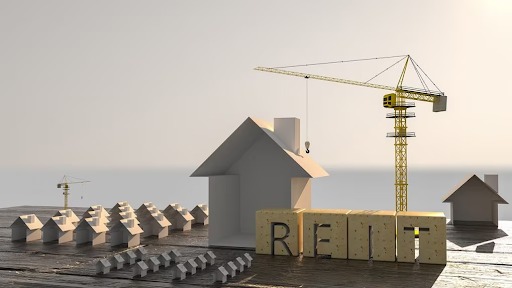India’s Real Estate Investment Trust (REIT) market is gearing up for a major leap — from ₹10.4 trillion in 2025 to ₹19.7 trillion by 2030 — according to a joint report by Knight Frank India and the Confederation of Indian Industry (CII). The surge will be powered by strong office demand, expanding retail portfolios, and the rapid institutionalisation of warehousing and data centres.
REITs Gain Momentum Amid Economic Expansion
As India moves toward a $7 trillion economy, commercial real estate (CRE) is taking centre stage as a key driver of productivity and investment. “Commercial real estate will play an essential role in powering India’s next wave of urbanisation,” said Shishir Baijal, Chairman and Managing Director, Knight Frank India.
The report, titled Commercial Real Estate: Potential is Built, Opportunity is Now, highlights how high occupancy rates, investor-friendly tax policies, and the inclusion of new asset classes — such as data centres, industrial parks, and hospitality — are accelerating REIT growth. Private equity inflows have also risen dramatically, from $500 million in 2011 to multi-billion-dollar levels by 2019, establishing a robust foundation for REIT expansion.
Office and Retail REITs Dominate India’s CRE Landscape
Office REITs continue to anchor the market, covering 15.3% of India’s total office stock across the top eight cities. The value of REIT-able office assets is projected to nearly double from ₹8.2 trillion in 2025 to ₹16 trillion by 2030. India’s office space has already crossed the 1 billion sq. ft. milestone, valued at ₹16.4 trillion, making it the fourth-largest globally.
The primary drivers remain Global Capability Centres (GCCs), IT firms, and domestic enterprises seeking sustainable and premium-grade workspaces.
Retail REITs, meanwhile, are emerging as the next major growth story. Of the total 66 million sq. ft. of Grade A retail stock in India, just 7.3 million sq. ft. is currently REIT-listed. The value of retail REIT assets is expected to rise from ₹1.5 trillion in 2025 to ₹2.4 trillion by 2030.
Organised retail consumption, pegged at ₹8.8 trillion for FY2025, is led by shopping centres (₹4.9 trillion), high streets (₹3.8 trillion), and new-age formats like airport and transit retail. Apparel and food & beverage categories dominate consumption patterns in malls and high streets alike.
“Retail REITs offer a unique gateway for investors to benefit from India’s consumption-led growth,” said Viral Desai, Senior Executive Director, Knight Frank India. “The shift towards experience-driven and sustainable retail is shaping the next chapter of commercial real estate.”
Warehousing, Industrial, and Data Centre REITs: The Next Frontier
India’s warehousing and industrial sectors have witnessed unprecedented momentum, fueled by e-commerce growth and the expansion of third-party logistics (3PL). The top eight warehousing markets now hold 220.9 million sq. ft. of Grade A stock, with leasing activity hitting 32.1 million sq. ft. in the first half of 2025 alone.
The combined value of warehousing and industrial REIT or InvIT assets is expected to increase from ₹0.7 trillion in 2025 to ₹1.3 trillion by 2030. The shift towards ESG-compliant, technology-driven logistics parks is further drawing in institutional capital and long-term investors.
Adding to this growth story are data centres — India’s fastest-growing CRE asset class. The country has already surpassed 10 GW in total capacity (1.4 GW operational and 8.8 GW under development), driven by digitalisation, AI, 5G deployment, and cloud adoption. With data localisation and AI-led demand on the rise, this segment promises substantial REIT participation in the coming years.
The Future of REITs in India: Quality, Sustainability, and Global Standards
While office and retail REITs continue to attract the bulk of institutional capital, Knight Frank and CII foresee the next major phase of growth emerging from industrial and data centre infrastructure.
“India’s commercial real estate has transitioned from promise to performance,” said Desai. “As the REIT market scales from ₹10.4 trillion to ₹19.7 trillion by 2030, focus must now shift toward delivering high-quality, sustainable, and globally benchmarked assets.”
With its expanding economic base, evolving investor ecosystem, and the diversification of REIT categories, India is fast positioning itself as one of the most dynamic commercial real estate markets in the world.
India’s Real Estate Investment Trust (REIT) market is gearing up for a major leap — from ₹10.4 trillion in 2025 to ₹19.7 trillion by 2030 — according to a joint report by Knight Frank India and the Confederation of Indian Industry (CII). The surge will be powered by strong office demand, expanding retail portfolios, and the rapid institutionalisation of warehousing and data centres.
REITs Gain Momentum Amid Economic Expansion
As India moves toward a $7 trillion economy, commercial real estate (CRE) is taking centre stage as a key driver of productivity and investment. “Commercial real estate will play an essential role in powering India’s next wave of urbanisation,” said Shishir Baijal, Chairman and Managing Director, Knight Frank India.
The report, titled Commercial Real Estate: Potential is Built, Opportunity is Now, highlights how high occupancy rates, investor-friendly tax policies, and the inclusion of new asset classes — such as data centres, industrial parks, and hospitality — are accelerating REIT growth. Private equity inflows have also risen dramatically, from $500 million in 2011 to multi-billion-dollar levels by 2019, establishing a robust foundation for REIT expansion.
Office and Retail REITs Dominate India’s CRE Landscape
Office REITs continue to anchor the market, covering 15.3% of India’s total office stock across the top eight cities. The value of REIT-able office assets is projected to nearly double from ₹8.2 trillion in 2025 to ₹16 trillion by 2030. India’s office space has already crossed the 1 billion sq. ft. milestone, valued at ₹16.4 trillion, making it the fourth-largest globally.
The primary drivers remain Global Capability Centres (GCCs), IT firms, and domestic enterprises seeking sustainable and premium-grade workspaces.
Retail REITs, meanwhile, are emerging as the next major growth story. Of the total 66 million sq. ft. of Grade A retail stock in India, just 7.3 million sq. ft. is currently REIT-listed. The value of retail REIT assets is expected to rise from ₹1.5 trillion in 2025 to ₹2.4 trillion by 2030.
Organised retail consumption, pegged at ₹8.8 trillion for FY2025, is led by shopping centres (₹4.9 trillion), high streets (₹3.8 trillion), and new-age formats like airport and transit retail. Apparel and food & beverage categories dominate consumption patterns in malls and high streets alike.
“Retail REITs offer a unique gateway for investors to benefit from India’s consumption-led growth,” said Viral Desai, Senior Executive Director, Knight Frank India. “The shift towards experience-driven and sustainable retail is shaping the next chapter of commercial real estate.”
Warehousing, Industrial, and Data Centre REITs: The Next Frontier
India’s warehousing and industrial sectors have witnessed unprecedented momentum, fueled by e-commerce growth and the expansion of third-party logistics (3PL). The top eight warehousing markets now hold 220.9 million sq. ft. of Grade A stock, with leasing activity hitting 32.1 million sq. ft. in the first half of 2025 alone.
The combined value of warehousing and industrial REIT or InvIT assets is expected to increase from ₹0.7 trillion in 2025 to ₹1.3 trillion by 2030. The shift towards ESG-compliant, technology-driven logistics parks is further drawing in institutional capital and long-term investors.
Adding to this growth story are data centres — India’s fastest-growing CRE asset class. The country has already surpassed 10 GW in total capacity (1.4 GW operational and 8.8 GW under development), driven by digitalisation, AI, 5G deployment, and cloud adoption. With data localisation and AI-led demand on the rise, this segment promises substantial REIT participation in the coming years.
The Future of REITs in India: Quality, Sustainability, and Global Standards
While office and retail REITs continue to attract the bulk of institutional capital, Knight Frank and CII foresee the next major phase of growth emerging from industrial and data centre infrastructure.
“India’s commercial real estate has transitioned from promise to performance,” said Desai. “As the REIT market scales from ₹10.4 trillion to ₹19.7 trillion by 2030, focus must now shift toward delivering high-quality, sustainable, and globally benchmarked assets.”
With its expanding economic base, evolving investor ecosystem, and the diversification of REIT categories, India is fast positioning itself as one of the most dynamic commercial real estate markets in the world.





